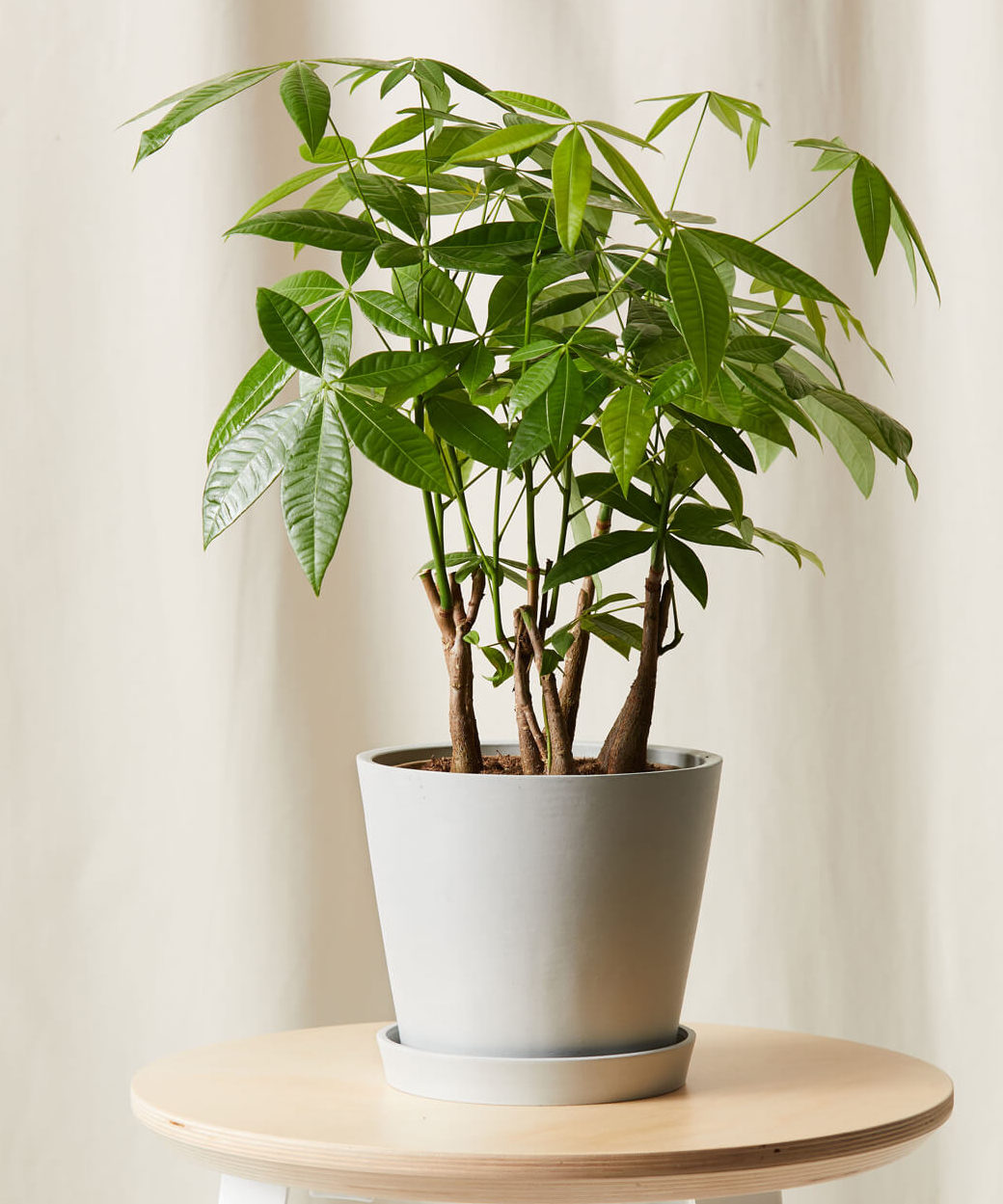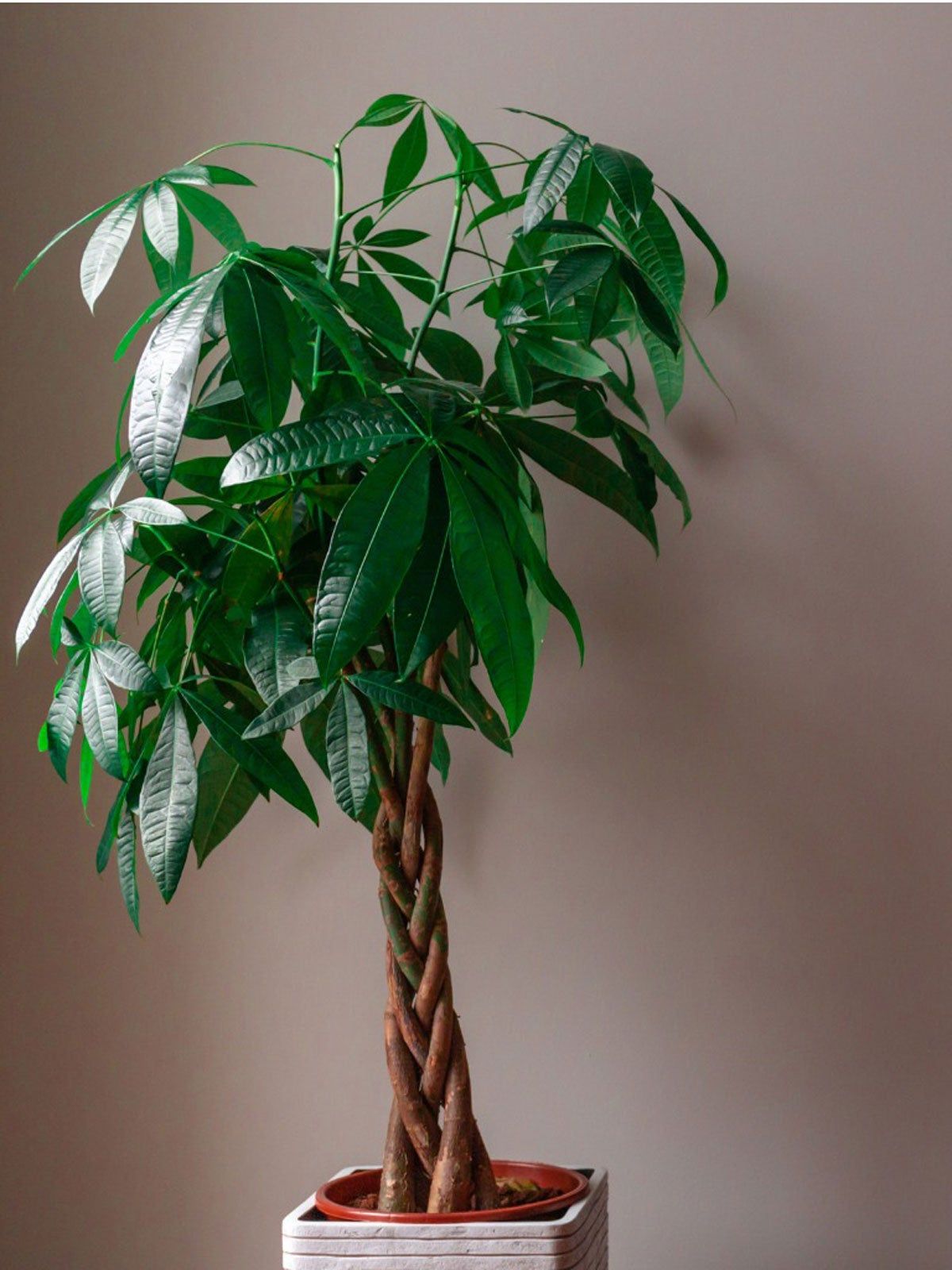The Lowdown on the Lucky Money Tree plant
Have you ever seen a plant with a cool braided trunk and vibrant green leaves that looks almost like little hands? Chances are, you’ve spotted a Money Tree, also known by its fancy scientific name, Pachira aquatica. This isn’t just any old houseplant; it’s often associated with good luck and prosperity, which is probably why it’s such a popular choice for homes and offices.
Where Does This Lucky Charm Come From?
The Money Tree isn’t some mythical plant that sprouted from a pot of gold. It actually hails from the swampy areas of Central and South America. In its natural habitat, it can grow into a pretty sizable tree. But don’t worry, the ones you see indoors are usually much smaller and well-behaved.

Why All the Fuss About Good Fortune?
The whole “money” and “luck” connection seems to come from a Taiwanese story. Legend has it that a poor man prayed for wealth, found one of these unusual plants, and started selling them. He became successful, and the plant got its lucky reputation. Plus, the braided trunk is sometimes said to symbolize the intertwining of fortunes. Whether you believe the folklore or not, it’s a fun story to tell!
Bringing a Money Tree Home: What You Need to Know
So, you’re thinking of getting a Money Tree? Great choice! They’re generally pretty easy to care for, which makes them a favorite even for those who don’t exactly have a green thumb. But like any living thing, they have their preferences.

Light
They enjoy bright, indirect light. Think of the kind of light you’d get near an east-facing window or a bit further back from a south-facing one. Direct, harsh sunlight can actually scorch their delicate leaves, and nobody wants that. If your space is a bit dim, don’t fret too much; Money Trees can tolerate lower light conditions, but they might not grow as vigorously.
Watering
Getting the watering right is key. Overwatering is probably the most common mistake people make. These plants don’t like to sit in soggy soil. It’s best to let the top inch or two of soil dry out between waterings. When you do water, make sure to do it thoroughly so the water reaches the roots. During the winter months when the plant’s growth slows down, you’ll need to water even less frequently.

Soil
A well-draining potting mix is your best bet. This helps prevent the roots from getting waterlogged. You can usually find suitable mixes at your local garden center.
Humidity
Coming from humid environments, Money Trees appreciate a bit of extra moisture in the air, especially during dry indoor conditions in the winter. You can increase humidity by using a humidifier, placing the pot on a pebble tray filled with water (making sure the bottom of the pot isn’t sitting directly in the water), or by misting the leaves occasionally.
Temperature
Average room temperatures between 65°F and 75°F (around 18°C to 24°C) are ideal for your Money Tree. They don’t like extreme temperature fluctuations or drafts.
Feeding
During the growing season (spring and summer), you can give your Money Tree a diluted balanced liquid fertilizer every two to four weeks. Hold off on fertilizing during the fall and winter when the plant is resting.
Pruning
Don’t be afraid to give your Money Tree a little trim if it starts to get too leggy or if you want to maintain its shape. Pruning can also encourage bushier growth.
Repotting
As your Money Tree grows, it will eventually need a bigger home. Repotting every year or two in the spring is usually sufficient. Choose a pot that’s only slightly larger than the previous one.
Common Issues to Watch Out For
Even though Money Trees are relatively easygoing, they can still run into a few problems.
Yellowing Leaves
This can be a sign of overwatering, underwatering, or even nutrient deficiencies. Check the soil moisture and your watering habits.
Dropping Leaves
Sudden changes in temperature, drafts, or inconsistent watering can cause leaf drop. Try to keep your plant in a stable environment.
Brown Leaf Tips
Low humidity or inconsistent watering can lead to crispy brown tips on the leaves.
Pests
Keep an eye out for common houseplant pests like spider mites or mealybugs. If you spot any, you can usually take care of them with insecticidal soap or by wiping them off with a damp cloth.
The Braided Trunk: What’s the Deal?
That cool braided trunk you often see isn’t something that happens naturally as the plant grows. It’s actually done when the plants are young and their stems are still flexible. Several young saplings are carefully braided together as they grow. As they mature, the trunks fuse together, creating that unique look. Pretty neat, huh?
Why a Money Tree Might Be Perfect for You
Beyond the potential good luck vibes, Money Trees are just plain attractive. Their lush green foliage and interesting braided trunks can add a touch of nature and a bit of visual interest to any space. Plus, they’re relatively low-maintenance, making them a great choice for busy folks or those new to plant care. They also help to purify the air, which is always a bonus!
In Conclusion
The Money Tree plant, with its captivating braided trunk and reputation for bringing good fortune, is more than just a pretty houseplant. Originating from the tropical regions of Central and South America, it has found its way into homes and offices worldwide, not only for its aesthetic appeal but also for the ease with which it can be cared for. By providing it with the right amount of light, water, and a little bit of attention, you can enjoy the lush greenery and perhaps even a bit of that legendary good luck it’s known for. Whether you’re a seasoned plant enthusiast or just starting your green journey, the Money Tree is a wonderful addition to any indoor space.
Frequently Asked Questions About Money Trees
What does it mean if my Money Tree has five leaves on each stem?
Some believe that Money Tree stems with five leaves are particularly lucky, as the number five is associated with the five elements in Feng Shui. However, it’s also just a common way the plant naturally grows!
Can I put my Money Tree outside?
During the warmer months, you can certainly move your Money Tree outdoors to a spot with indirect sunlight. Just make sure to bring it back inside before temperatures drop in the fall.
How often should I repot my Money Tree?
Young Money Trees typically need repotting every year or two in the spring. As they mature and their growth slows, you might only need to repot every three to four years. You’ll know it’s time when you see roots growing out of the drainage holes or the plant dries out very quickly.
Is the Money Tree safe for pets?
Good news for pet owners! The Money Tree is generally considered non-toxic to cats and dogs. However, it’s always best to keep your furry friends from munching on your plants, as it could still cause some stomach upset.
My Money Tree’s braided trunk is unraveling. What should I do?
Money Tree Plant
